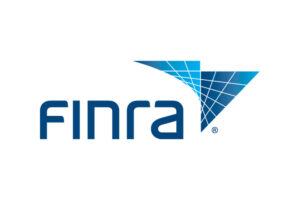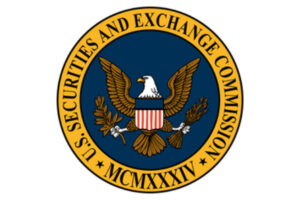PARTICIPATORY FOSTER
a variation by Manouk DER STEPANIAN from the original FOSTER process
Problemático:
It is often difficult, if not even impossible, to raise the budget of a large IPO (Initial Public Offering). In addition to significant costs, it monopolizes a significant portion of the company’s resources and the management’s attention. That is why it is not uncommon that during the IPO process, the performance of the company is heavily impacted. Hence, an additional need for funding, if only to offset the poor sales performance due to the effort of the IPO process.
On the other hand, it is appropriate to differentiate, in the total cost of an IPO, the costs that must be borne by the future company issuing shares before trading the IPO process, called “Upfront” or “Pre- Cash ” (fees of lawyers, …), of those which will be supported at the end of the IPO by the raised funds,”Post-Cash”(commissions of Brokers or Investment Banks, …).
Solución
That’s why I invented the combination called “FOSTER”.
The principle is simple:
- An IPO Incubator Company is incorporated in the State of Delaware in the United States of America. For our purposes, we will call it “Incubator”. It is a traditional financial company that, depending on its structure, may or may not be required to register with the SEC (Securities & Exchange Commission) as a subject of the 1940 Investment Company Act.
- A special vehicle company is incorporated in Delaware / USA. For our purposes, we will call it “SPV” (Special Purpose Vehicle). It is an industrial and commercial company that can be seen as a holding company, however we discard this term because it results in a serious devaluation when a listed company is perceived by the market as a “Holding”.
- In the SPV, all assets of the company or group seeking IPO financing should be consolidated together. Although this is not an absolute obligation, for example when a known group has a subsidiary bearing all or part of its name, for example:
BOUYGUES Telecom or PEUGEOT Leasing, it is necessary for the future SPV issuer to remain financially, commercially and in every sense of the word credible in front of the market.
This problem must be studied case by case. - DHP (Deschenaux, Hornblower & Partners) prepares a “Regulation A +” disclosure document for the Incubator. Since this document is very similar from one time to another, the cost of this operation should decrease significantly over time. This disclosure document states to the investor that Incubator is an investment company that finances IPOs of any size, against a share of the capital prior to the IPO and a prorata share of the raised funds payable after the IPO. This document offers the investor three ways out of investment:
- Either s/he sells his Incubator shares at the time of the IPO;
- Either s/he converts (its) her/his Incubator actions into SPV actions after the Incubator IPO and before the start of theSPV IPO process;
- Incubator buys back her/his shares after (its) Incubator IPO.
- Incubator files with the SEC for registration and listing on a US stock market.
- La SEC revisa el expediente y envía sus comentarios, preguntas y posibles objeciones a Incubator.
- Meanwhile, Incubator and the investment bank or investment bank syndicate that distributes its shares are holding roadshows to promote the stock on the market and to collect Incubator share “orders”. During this period, legally, each market player is not allowed to buy the shares, s/he can only express her/his interest and quantify the amount s/he is willing to invest. In practical terms, a buyer who expresses an interest in a quantity of shares and then withdraws would lose any credibility on the market and would be unable to continue trading in other IPOs.
- At the end of this process (points 5 above to 7 above) iteratively, the SEC gives the Incubator’s Jurist the quotationauthorization.
- Incubator can therefore register with a US stock market, such as the NASDAQ.
- In the rare case of multiple listings, Incubator may also register with foreign stock exchanges.
- Incubator rings the NASDAQ bell and makes his IPO.
- Once the funds are raised, in accordance with the use of the product stipulated by the Reg A + Disclosure Document, Incubator makes at least the following payments:
- A payment to the investment bank’s account to pay the brokerage commission if it has not been deducted before the funds are returned to Incubator.
- Un pago a la cuenta de SPV para asegurar la financiación de SPV.
- Payment of SPV’s IPO fees and expenses to the lawyers’ account.
- El pago de un bono de éxito a cuenta de los abogados según los procedimientos prescritos.
- A payment to the financier of the Incubator IPO.
- SPV recibe de Incubadora el presupuesto necesario para llevar a cabo su salida a bolsa.
- DHP (Deschenaux, Hornblower & Partners), SPV’s team of lawyers is drafting a “Regulation S-1” disclosure document for the Incubator.
- DHP (Deschenaux, Hornblower & Partners) is preparing the SPV registration file with the SEC in Form S-1 and the due diligence file. This is much longer than the Reg A + form prepared for Incubator. It should be noted that the Reg A + form is a short form because it seeks a partial exemption from registration, while the S-1 form is a complete record including all significant transactions carried out by the issuer in the last five or ten years, according to the case. The issuer can not begin this full registration process until it has two full accounting years and a number of financial conditions completed.
- Este documento ofrece al inversor tres vías de salida de la inversión:
- Either s/he sells her/his SPV shares at the time of the IPO;
- Either SPV buys back (its) her(his shares after (its) Incubator IPO.
- Finally, s/he does not wish to leave and remains a shareholder of SPV by focusing on her/his activity.
- SPV files its file with the SEC in order to be able to register there and obtain the listing of its shares on a US stock market.
- The SEC reviews the file and sends its comments, questions and possible objections to SPV.
- Meanwhile, SPV and the investment bank or investment bank syndicate that distributes its shares organize roadshows to promote the security on the market and to collect SPV’s “orders” for shares. During this period, legally, each market player is not allowed to buy the shares, s/he can only express her/his interest and quantify the amount s/he is willing to invest. In practical terms, a buyer who expresses an interest in a quantity of shares and then withdraws would lose any credibility on the market and would be unable to continue trading in other IPOs.
- At the end of this process (points 17 above to 19 above) iteratively, the SEC gives the Incubator’s Jurist the quotationauthorization.
- Incubator can therefore register with a US stock market, such as the NASDAQ.
- In the rare case of multiple listings, Incubator may also register with foreign stock exchanges.
- Incubator rings the NASDAQ bell and makes his IPO.
- Once the funds have been raised, in accordance with the use of the product stipulated by the Reg A + Disclosure Document, SPV will make at least the following payments:
- A payment to the investment bank’s account to pay the brokerage commission if it has not been deducted before remitting the funds to SPV.
- A payment to SPV’s operations account to secure SPV funding.
- Payment of SPV’s IPO fees and expenses to the lawyers’ account.
- El pago de un bono de éxito a cuenta de los abogados según los procedimientos prescritos.
- A payment to the financier of the IPO of SPV, Incubator.
Conclusion:
The FOSTER solution makes it possible to make a first Initial Public Offering of Incubator serving as Mezzanine of support to SPV and financing its large public offering for USD 2 million.







